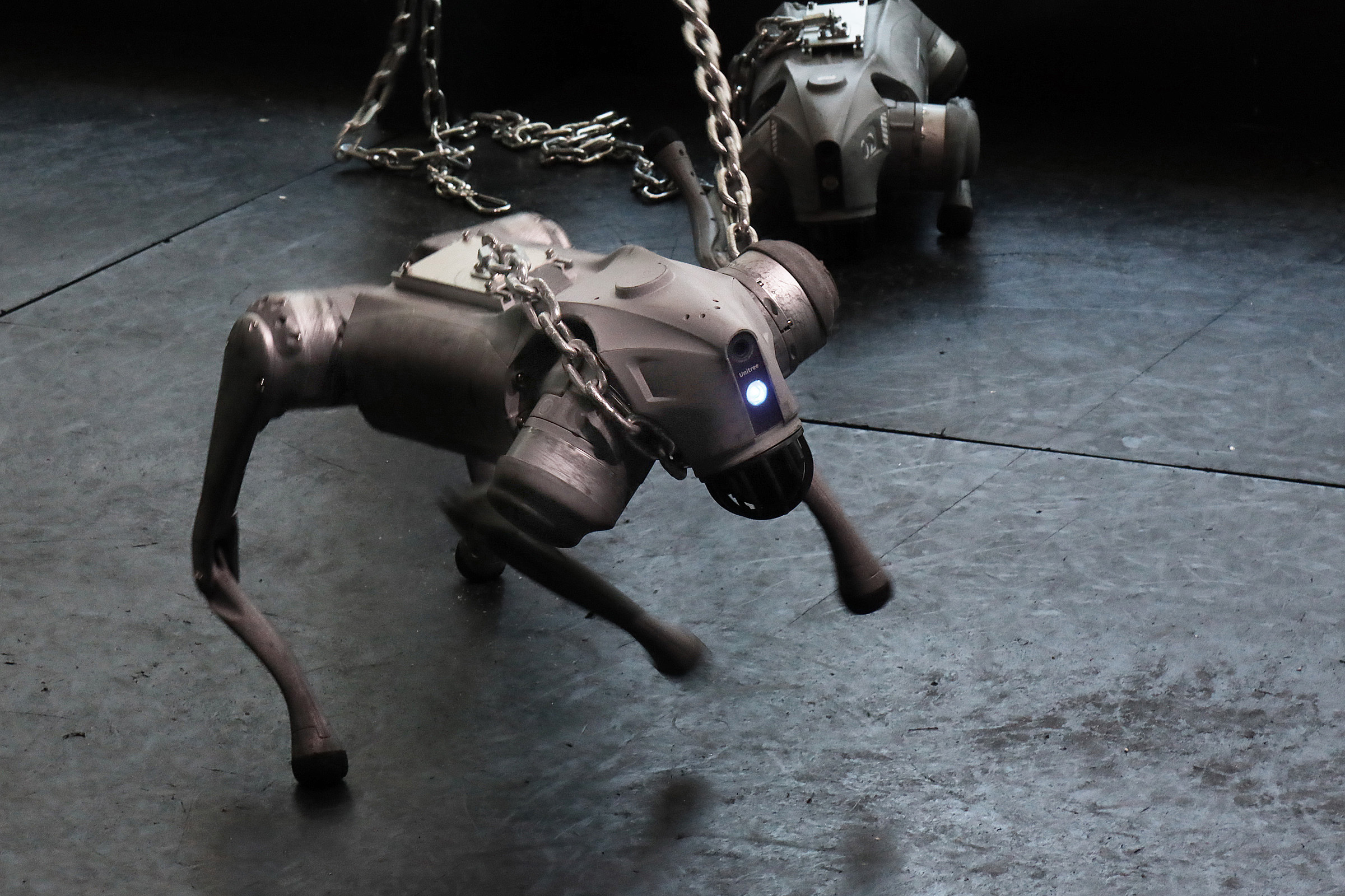This year, the Ars Electronica Festival is once again focusing on the major crises of our time—and the panic they cause in us. At the same time, it shows how art can help us cope with these turbulent times.
Ronald Reagan said that “status quo” is Latin for “the mess we’re in.” In 2025, this statement seems more relevant than ever. The liberal world order is shaking, and the political landscape has become more fragile and unstable. Rapid advances in the development of artificial intelligence are raising fundamental questions about the job market. The climate crisis is claiming more and more lives, destroying livelihoods, and fueling conflict and migration.
Uncertainty: A Constant and an Opportunity
What will happen next seems unpredictable – and that is precisely what frightens us, even causes panic. Because unpredictable developments pose great dangers. In such moments, we like to fall back on the tried and tested, on patterns that we know and that offer security – and fail in doing so. Because old solutions do not work for new problems.
But how can we overcome our uncertainty and fear? How can we overcome the paralysis that panic causes us and instead turn panic into a force that we can grow from and from which something new can emerge? Ars Electronica 2025 advocates learning from art. It shows us that uncertainty does not necessarily mean threat – it also holds hope, even when there are good reasons to panic. What does this require? First and foremost, the ability to accept uncertainty: living in a state of uncertainty.
We have always tried to bring order to the chaos of the world – and in some cases very successfully. At the same time, we owe our progress to our ability to adapt and evolve. However, the challenges of the past were mostly concrete and tangible. Today, things are different: our world is more complex and the threats are more abstract – such as climate change, which is fueled by invisible greenhouse gases. The solutions we need today must be long-term and will often only take effect in decades or centuries. Flexibility, creativity, and empathy are required: we must learn to think in new ways, act differently, and see ourselves as part of a larger whole.
Complex, Absurd, and Ominous
The Ars Electronica Festival is dedicated to exploring the questions that accompany this panic in various thematic strands. First and foremost, the themed exhibition COMPLEX.ABSURD.OMINOUS., supported by European Digital Deal and the BMWKMS*, asks: What does it mean to live in a world that is becoming increasingly incomprehensible to us? COMPLEX stands for panic as fragmented diversity, ABSURD for panic as a tool, and OMINOUS for panic as a method.
„The exhibition on the topic Panic invites you to confront some of the most pressing questions of our time: What do we fear, what should we fear, and why is this crucial? Political and technological spectacles gripped by marketing frenzy, war and militarization, social inequalities, gruesome human rights violations, restrictions on diversity and identity, climate change and environmental fears, commercial promises that create artificial needs, tendencies toward external control, and more general concerns about survival—all of these are just some of the signs that we are increasingly experiencing moments of individual and collective panic. But what remains when the fear of panic itself becomes panic?“
– Manuela Naveau, Co-Kuratorin Themenausstellung
As part of the theme exhibition, Liminal Ring by Jin Lee (KR) questions our stable order: a large-scale installation consisting of 384 fans that create stable air vortexes—so-called flow rings. These artificially created shapes seem to create order, but quickly dissolve and become part of a larger, chaotic air field. The work poetically shows how doomed our attempts to control nature are. It invites us to reflect on the limits of human predictability—and on our relationship to complex systems that we only appear to control.
In the choreographic performance Room no.0 by Zhuojun Li (CN), Darya Sheiko (BY), Darya Kostskina (BY), Junjian Wang (CN), Patrick Ortiz (BO), Christine Haupt (DE), Hanif Haghtalab (IR), Hanna Kortus (DE), and Alireza Khosroabadi (IR), we are confronted with our fears, uncertainty, and loss of control: here, personal rituals and fragmented ideas of home are translated into movement. Dancers from the Anton Bruckner University and media artists from the Interface Cultures program at the University of Arts Linz bring everyday moments to the stage—an emotional field of tension between fears, routines, and structures of daily life. In an interplay between individual expression and collective dynamics, a space opens up that reveals private inner worlds – until everything is transformed into a frenetic, audiovisual movement ritual.
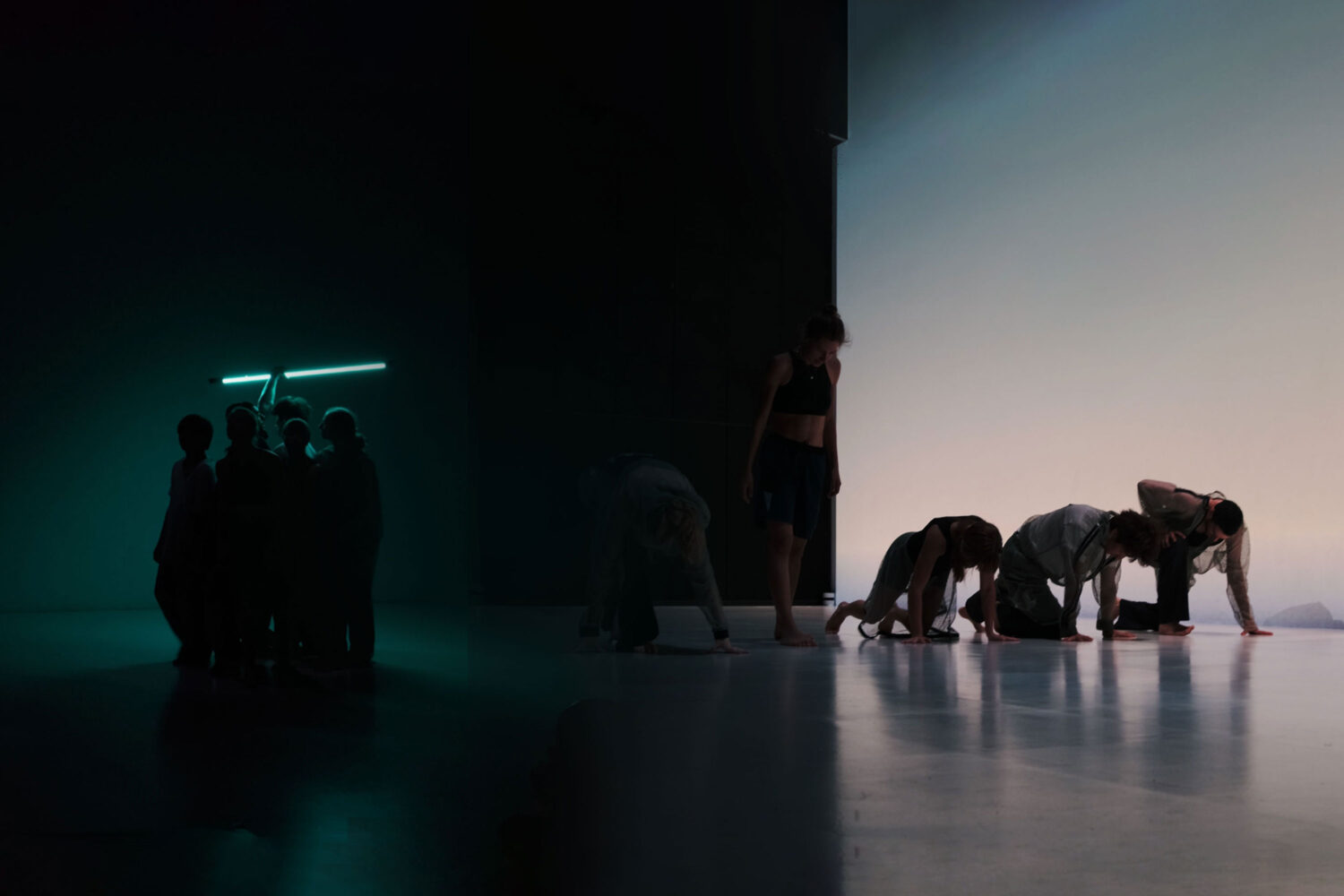
The Ars Electronica Futurelab (AT) and Toyota Coniq (JP) are exploring social issues surrounding the status quo and possible solutions in the Data Art & Science Initiative: How do we as a society collectively deal with modern challenges such as aging and vacancy? How can interdisciplinarity revitalize rural communities? At the festival, visitors will get a glimpse of the planned Data Art & Science Center in Hikone. Here, data, art, science, and social engagement will be used collaboratively to shape the future of the Shiga region in Japan.
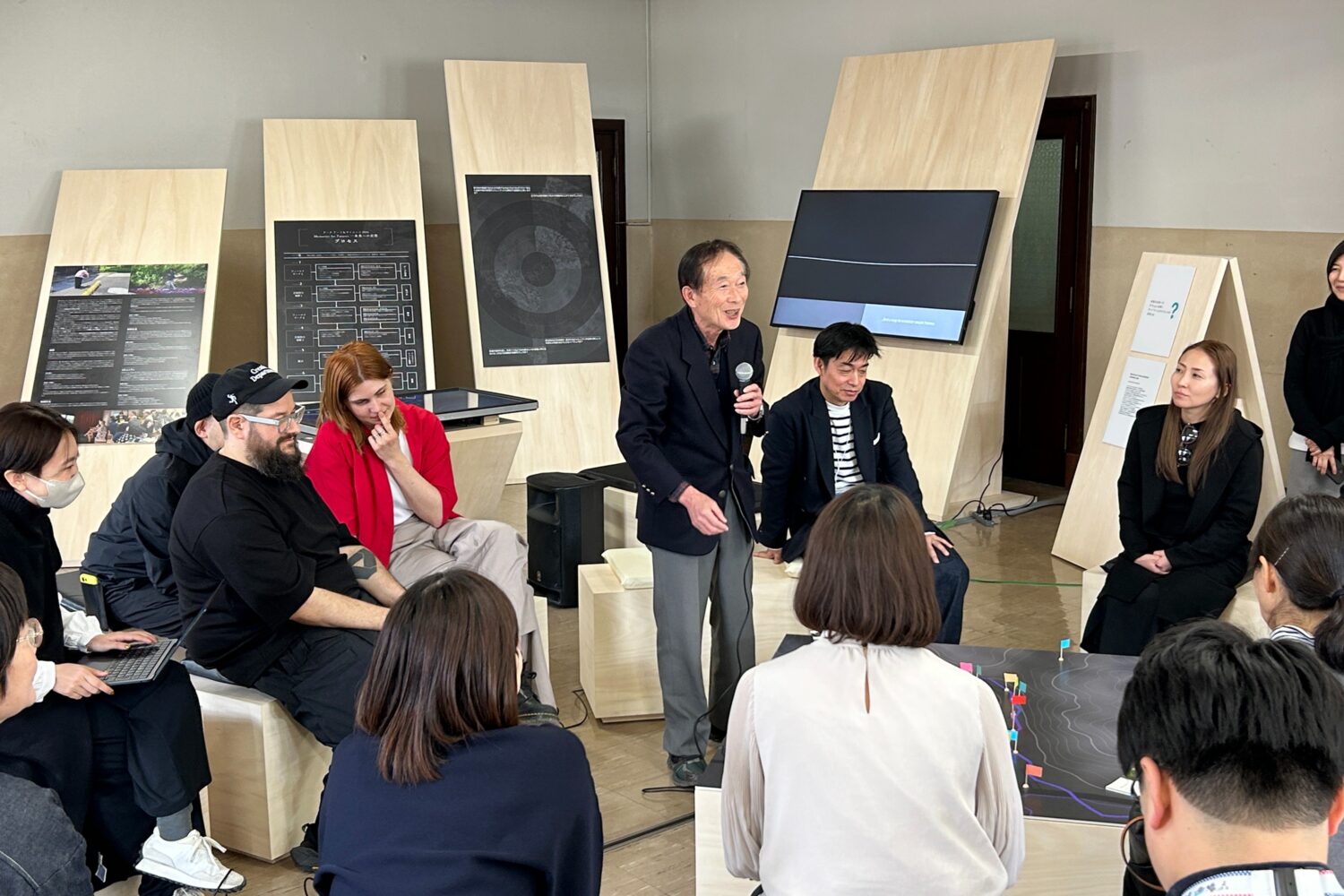
The Future Humanity Research research platform, also a project of the Ars Electronica Futurelab (AT) in cooperation with Toyota Motor Corporation’s Advanced Technology Development Company (JP), invites us to reflect on who we are and what place we occupy in the world—in times of AI, climate crisis, and global complexity. At the Ars Electronica Festival 2025, the Ars Electronica Futurelab will launch an open research platform to bring together artists, researchers, companies, governments, and educational associations.

Collective Panic and Social Connectedness
You are not alone in your panic, we are all connected—this is also demonstrated by another project led by Ars Electronica Futurelab: Deep Sync Connect by Susanne Kiesenhofer (AT), Daniel Rammer (AT), Anna Weiss (DE/AT), Johannes Pöll (AT), part of the multi-stage EU project SHARESPACE, asks: How can we create a “sense of connectedness” in the new technological worlds of our everyday lives? Deep Sync Connect invites participants on site and remotely to engage in virtual interaction and reflection on real encounters. This immersive experience in the Ars Electronica Center’s Deep Space 8K explores the feeling of connectedness in shared hybrid spaces by sharing something as personal as the heartbeat.
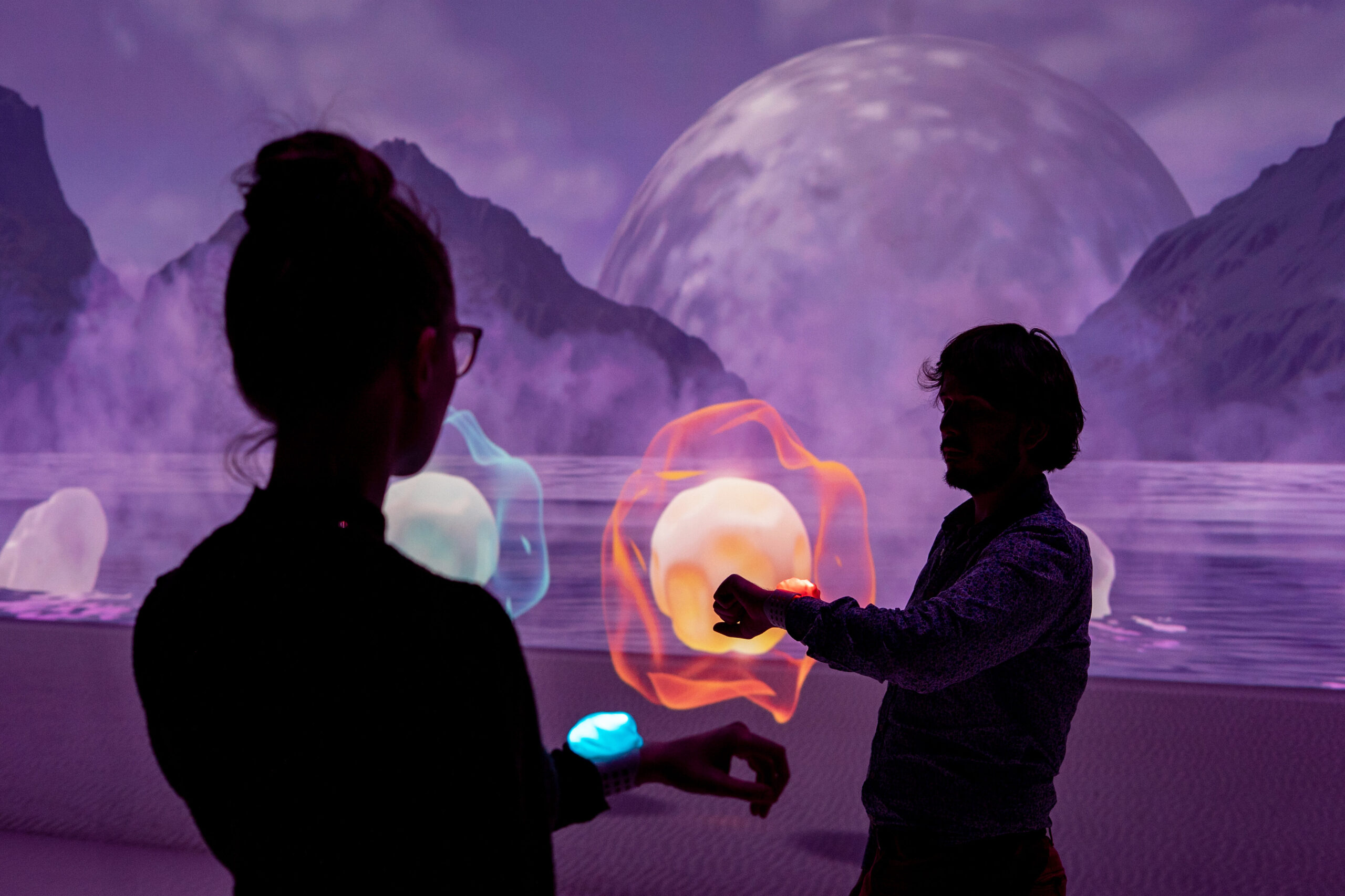
Connection, this time on both a personal and social level, is the focus of The Falling City by Noemi Iglesias Barrios (ES), which uses computer vision to make emotions visible in public spaces: when people kiss, hug, or hold hands, a glass sphere on the ceiling lights up—each gesture generates its own color. At the same time, an “emotional counter” counts the total amount of affection measured in seconds. The result is a silent chronicle of human closeness in the city. The work combines technology, craftsmanship, and urban research—without any facial recognition or invasive surveillance.
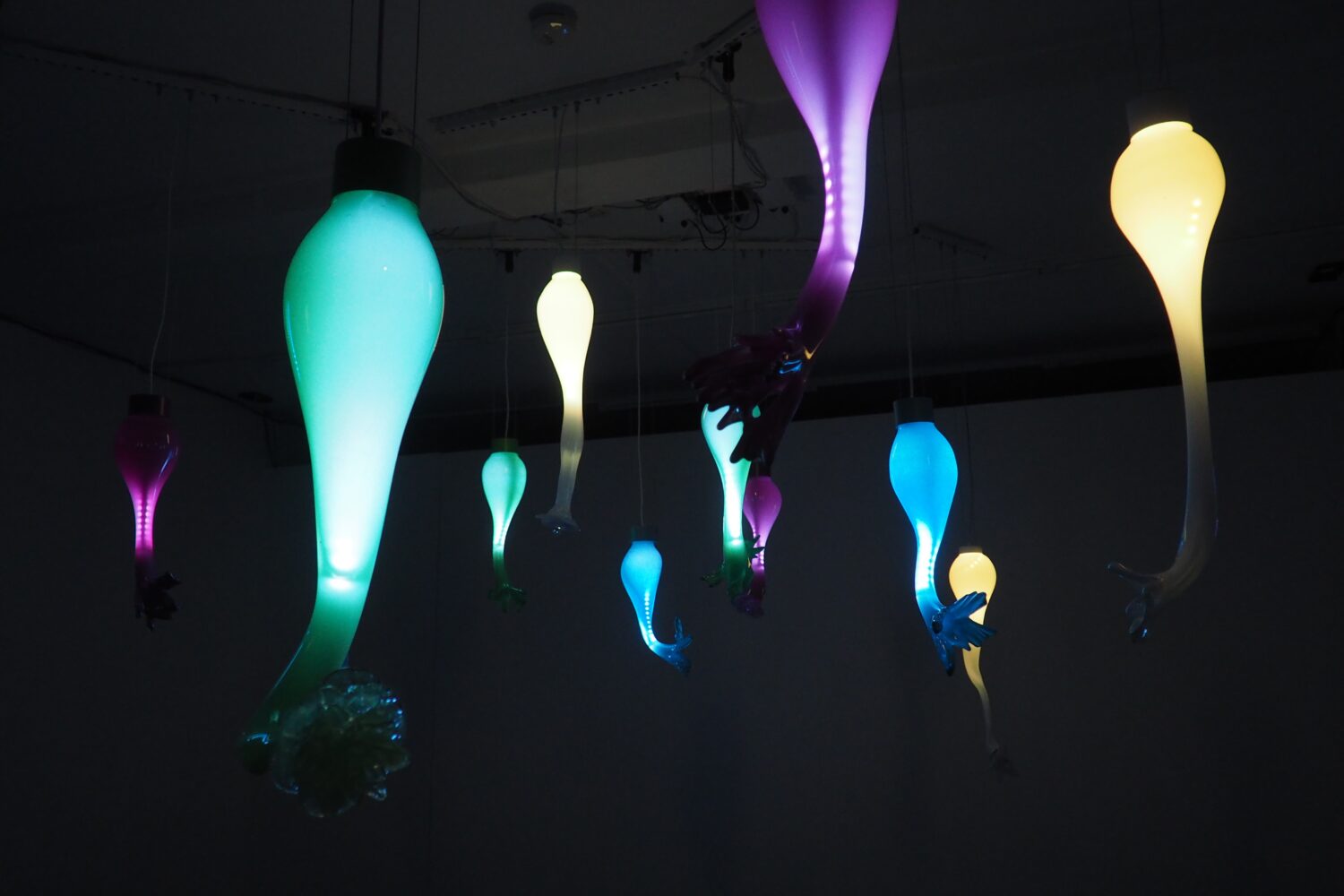
Inaction and Uncertainty
The project World at Stake by Total Refusal (AT) deals with waiting, doing nothing, inaction—also a stage of uncertainty: A golfer misses the ball, a soccer team plays against itself—everything stands still. The film, shot in sports video games, subverts the familiar rules of victory and defeat. Action comes to a standstill, movement loses its purpose – and the audience remains passive. The result is an image of collective powerlessness in the face of global crises: present, but speechless. World at Stake becomes a metaphor for a society in limbo – while the world hangs in the balance.
The short film Seedless Fruits by Stefanie Schwarzwimmer (AT/DE) also deals with uncertainty in the labor market. As part of the animation series Austrian Panorama, it uses bitter humor to guide viewers through a collapsing office building and satirically highlights the absurdities of neoliberal work culture. Between PowerPoint aesthetics and crumbling efficiency, the alienation of the working world becomes palpable. All the works in the “Austrian Panorama” selection raise central questions about identity, control, and social responsibility.
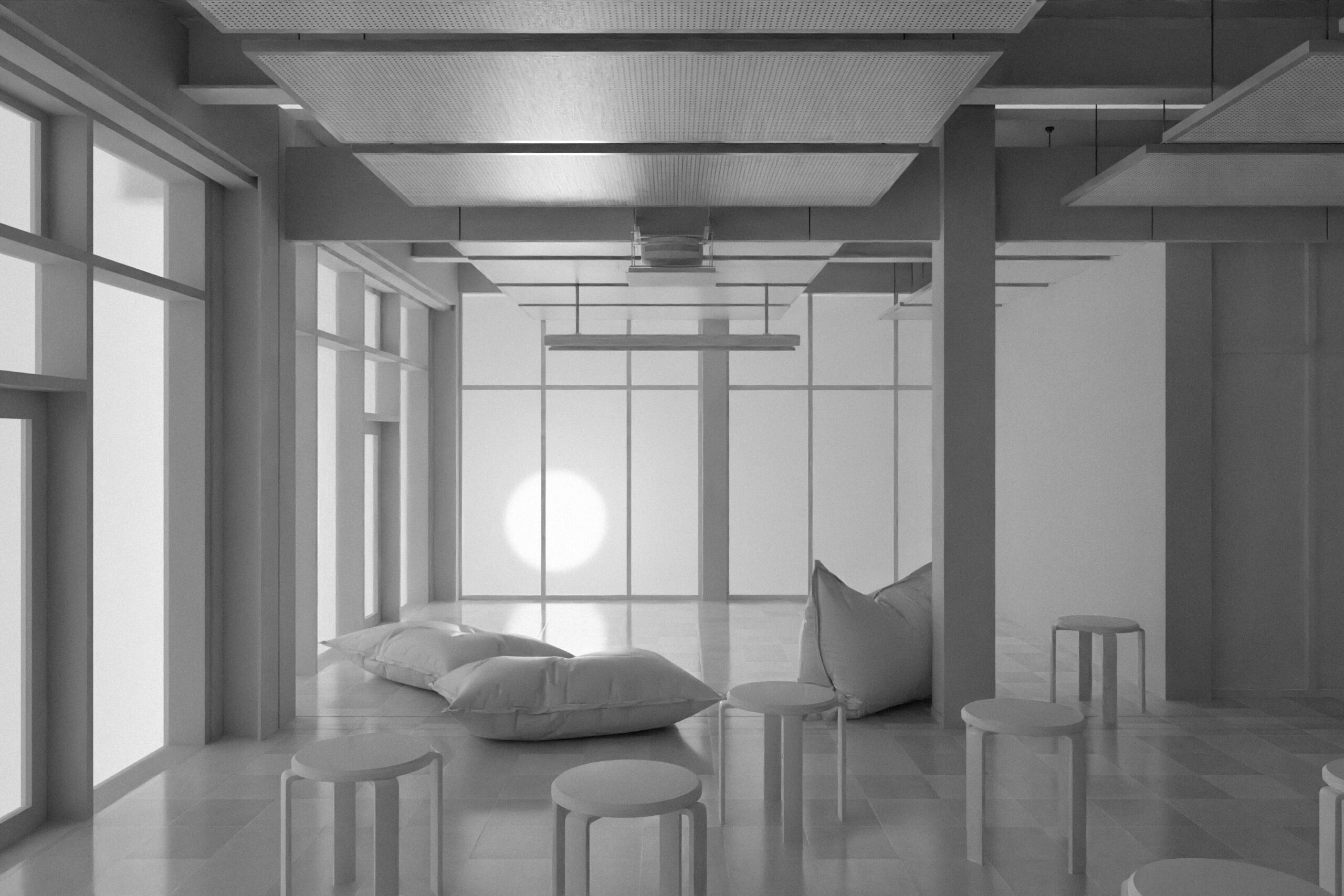
Another aspect of our society, the grotesque double standards of modern food culture and, above all, the “Death of Marketing” presented in the theme exhibition, is highlighted by Sweet Dreams by Marshmallow Laser Feast (GB): between moral awareness and excessive consumption, between animal suffering and the world of advertising. The installation shows how culturally shaped our eating habits are – for example, through the absurd mascot, a cheerful chicken that approves the consumption of its own flesh. Here, food becomes a mirror of social identity, a status symbol, and an unconscious outlet for our urges. The work is disturbing and funny at the same time – and uses visual opulence to expose our self-righteous “sweet excuses.”

The Artistic Face of Panic
Panic also gets an artistic face in Deep Space 8K: The world is on the brink of collapse. The artificial intelligence Omnitron proposes a radical solution: the extinction of the species responsible for the chaos—humanity. As part of the AcuTe project to promote digital theater, the interactive production The Trial Against Humanity by Det Norske Teatret (NO), supported by ACuTe**, challenges the audience to face Omnitron’s accusations, question themselves, and defend themselves.
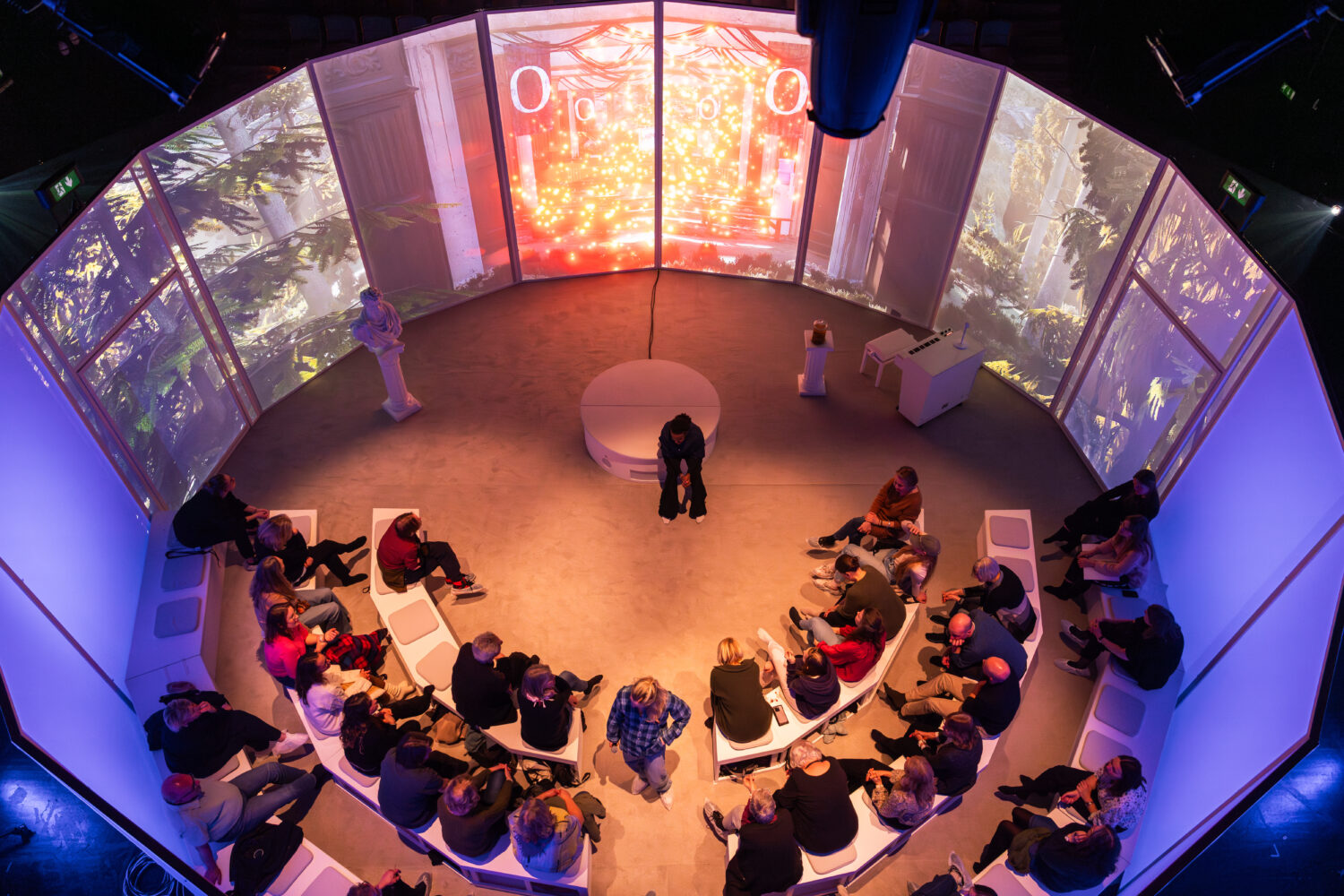
In “Game,” David Szauder (HU) transforms us from silent observers in front of the screen into participants in the conflict: “What should we play today? Let’s play war, we’re soldiers. But I want to win! No, you won’t win. I’m going to win and you’re going to lose. I hate that you always want to win. And I hate that you always decide what we play. You know what? Let’s go to war for real.”
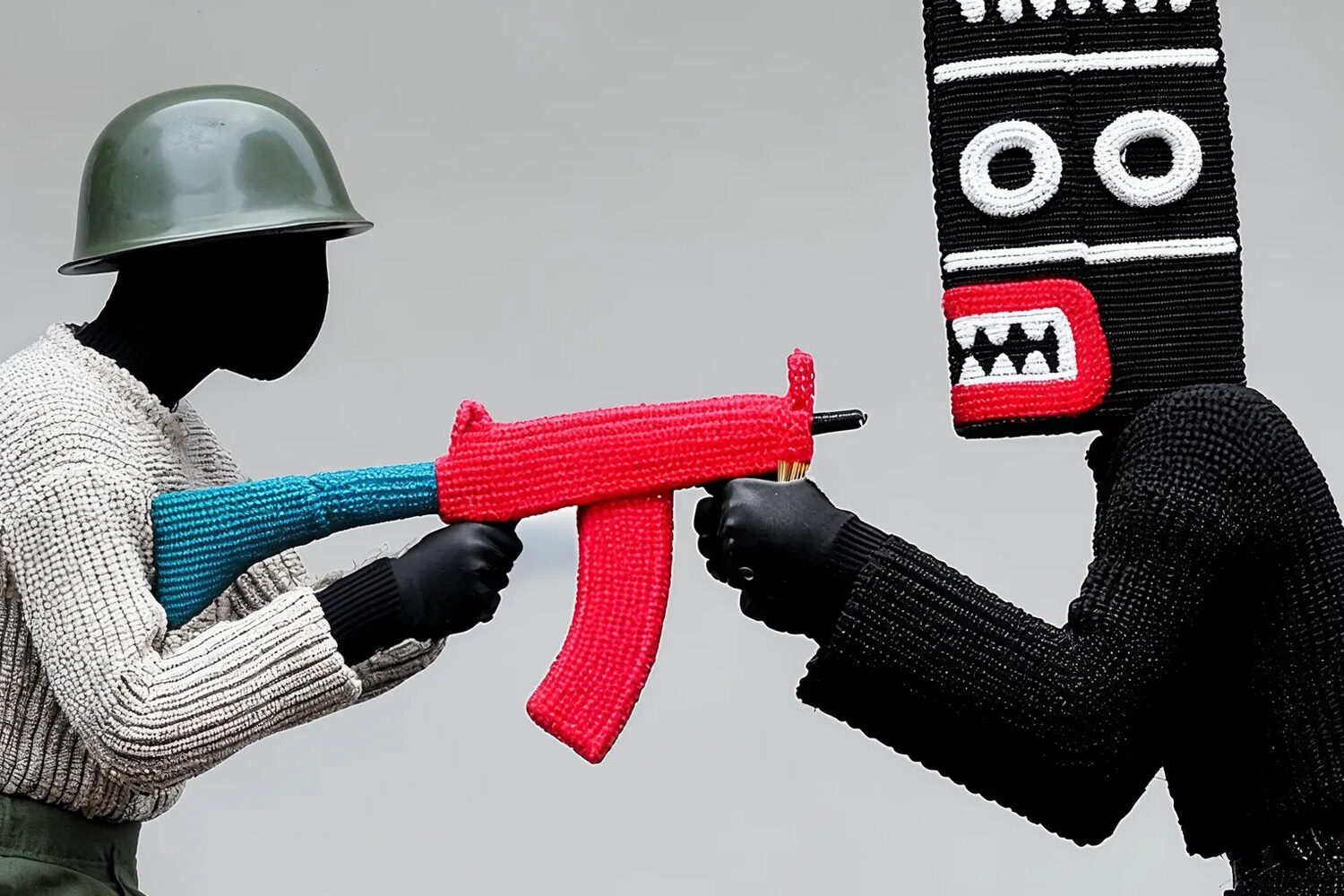
War, violence, and conflict as omnipresent threats to our supposed world order are also encountered at the festival among the award-winning projects of the Prix Ars Electronica:
A robot dog pulls on a chain, fights, falls over, gets back up—until it collapses from exhaustion. In Dynamics of a Dog on a Leash by Takayuki Todo (JP), Honorary Mention of the Prix Ars Electronica 2025 in the Artificial Life & Intelligence category, violence becomes spectacle, and the audience watches from a safe distance. Although the dog is artificial, its movements evoke genuine compassion – and raise questions: At what point do we consider machines to be alive? And what responsibility do we bear when we begin to respond compassionately to non-living things? The work shows how blurred the line between real life and technical simulation has become – and how disturbingly human the inhuman can appear.
Panic, Power, and Politics
The uncertainty surrounding the future of AI, coupled with the question of who has power over these technologies, inevitably leads us to Silicon Valley: Two self-obsessed “tech bros”—AI-generated avatars based on the face and voice of Sputniko! (JP/GB)—discuss the future of humanity in Tech Bro Debates Humanity. Their statements also come from an AI system and caricature the self-referential ideology of Silicon Valley. The work cites feminist art strategies and Donna Haraway’s cyborg theory to question rigid boundaries between humans and machines, men and women. Who actually determines what our future looks like – and can we trust these voices?
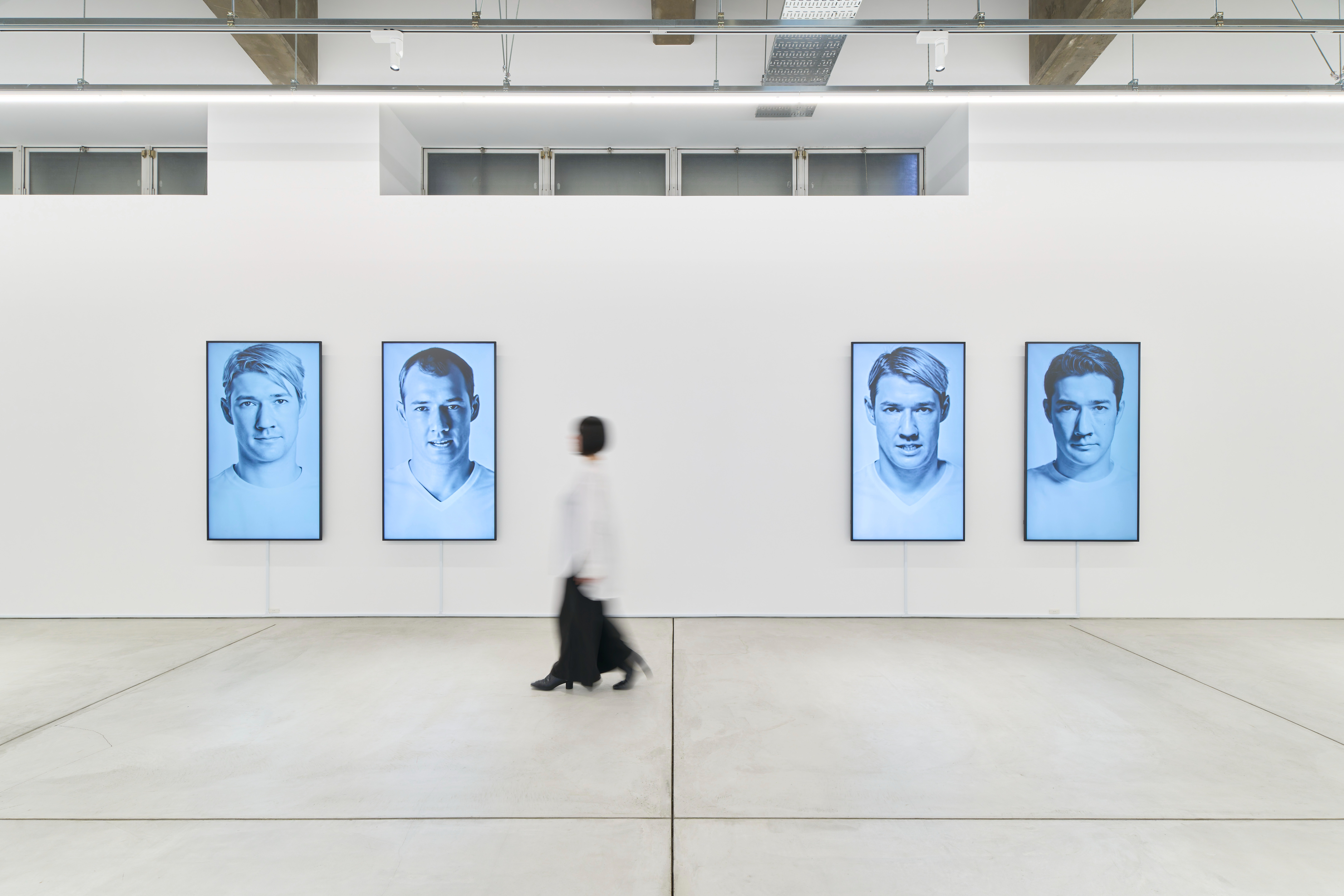
One name cannot be left out of this narrative of imbalances in the tech industry: with the installation ELON, Simon Weckert, together with the GIGACITIES COLLECTIVE (DE/US), parodies the cult surrounding Elon Musk—and does so in the style of a glossy celebrity magazine. Between AI-generated satirical images, dazzling lenticular prints, and 69 copies of “ELON” magazine, a techno-religious aura emerges that oscillates between worship and disturbance. Videos from gigafactories and a hypnotic soundtrack reinforce the feeling of having stumbled into a futuristic fantasy that no longer distinguishes between criticism and homage… ELON is a hall of mirrors made up of gigahyp, fear of the future, and media self-promotion. The project is accompanied by the panel discussion Art in the Age of Panic Politics, in which Weckert, together with renowned artists, scientists, and thought leaders, reflects on the role of art in an increasingly polarized public sphere.
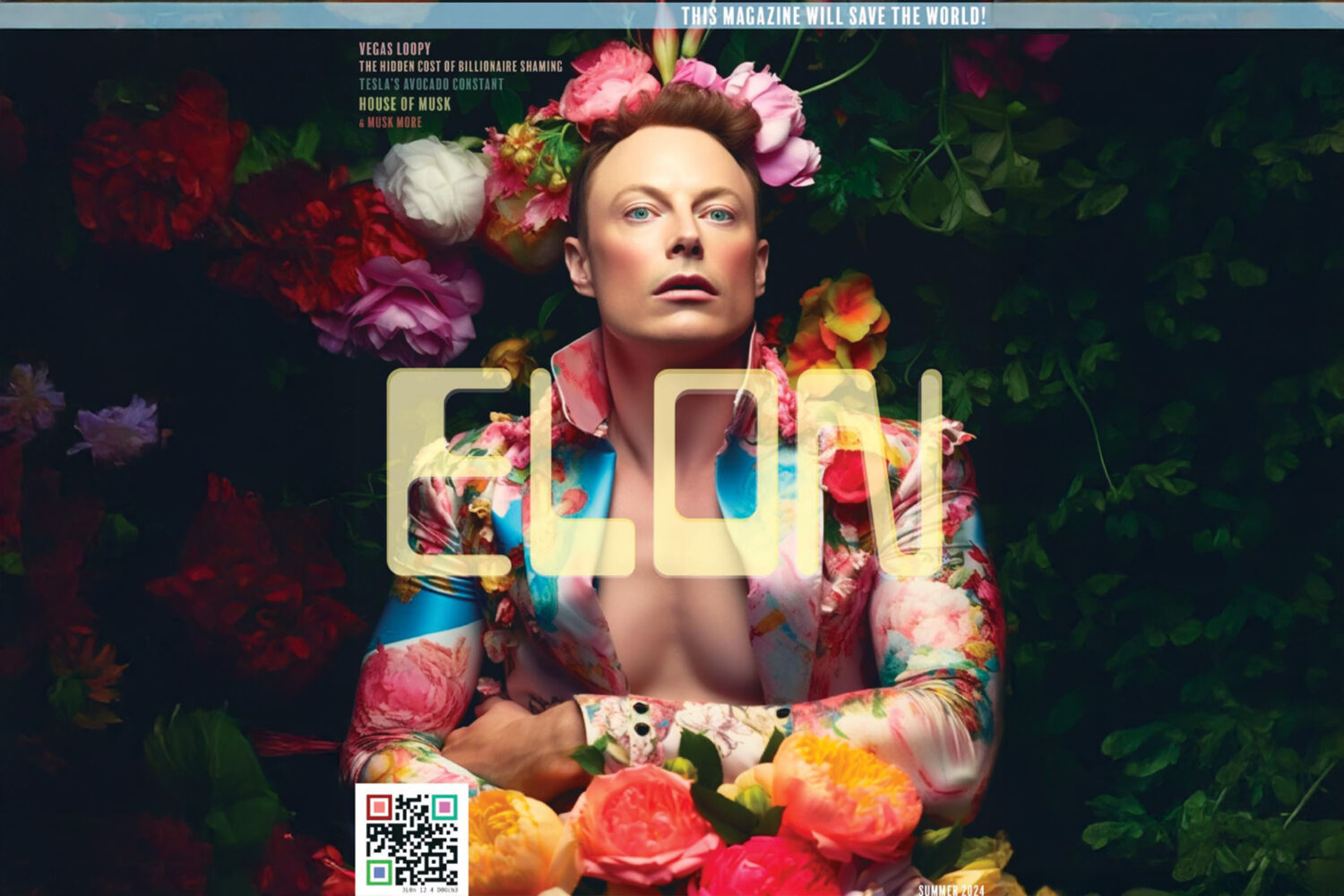
All these projects take a critical look at the status quo—at a new reality of uncertainty that we must learn to live with. They show how art can open up ways not only to confront this uncertainty, but also to see it as an opportunity to help shape the future. These works—and many more—can be experienced at the Ars Electronica Festival 2025 from September 3 to 7 in Linz. There, visitors will have the opportunity to personally confront their own panic, fears, and unanswered questions. In the upcoming parts of this series, we will focus on collective resistance, digital sovereignty, and current environmental challenges.
*The Theme Exhibition is presented in the context of European Digital Deal. European Digital Deal is co-funded by the Creative Europe Programme of the European Union and by the Austrian Federal Ministry for Housing, Arts, Culture, Media and Sport.
**Trial against Humanity has been developed and is presented in the context of ACuTe. ACuTe is co-funded by the Creative Europe Programme of the European Union.
